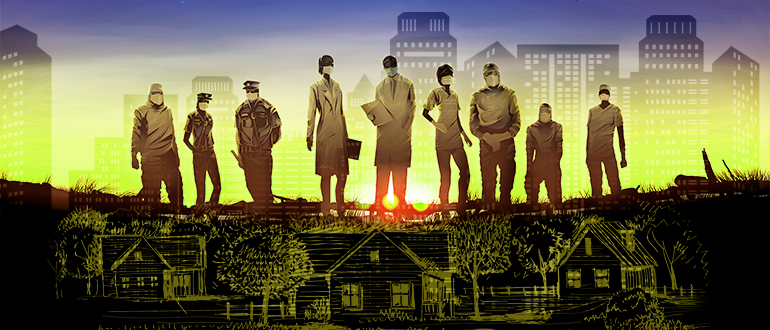Exploring the Dynamics of Urban Community and Rural Community
What is an ‘urban’ and a ‘rural’ area?
Though the rural community is somehow the backbone of the urban economy, the urban community is better positioned to help the rural community in distress. This is because urban areas are densely populated areas with artificial surroundings and the population engaged in trade, commerce, or services. On the other hand, rural areas mean villages or hamlets outside the city’s boundaries with a low population density and large areas of undeveloped land forming the main occupation of its inhabitants-agriculture and animal husbandry. In India, a town with a population below 15000 is considered a rural area.
Why does rural India need Urban India’s help?
There were 6,64,369 villages in India by 2019. A significant portion of India’s population resides in rural areas, and India’s development is dependent on the availability of meaningful life support facilities, especially healthcare facilities to be provided to rural areas suffering from poverty, diseases, and lack of cleanliness.
Lack of quality healthcare infrastructure, qualified medical specialists, and medicines needed in daily life has made healthcare reach only 40% of the Indian population, with very little trickle-down to the rural population. In rural areas, 8% of healthcare centers do not have adequate medical staff, 39% do not have lab technicians, and 18% do not have a Pharmacist.
Urban Community and Rural Community: A Comparative Analysis
Rural India during COVID-19
Since the Pandemic has affected the world, the focus has been to spread information on COVID social protocols. The country has learned new things about the virus while battling it for more than a year now. Initially, the importance was to follow distancing and cough/sneeze into a napkin or the elbow to avoid transmission. Now people are being urged not to leave their homes unless extremely necessary and use the double-masking method or N95 masks to protect themselves.
These new developments in the knowledge system and behavior result from continuous trial and error by qualified specialists who have identified an Epidemic in between the Pandemic despite having similar symptoms of infection. This knowledge was quickly dissipated in the urban areas, and the required medical essentials were manufactured. However, rural areas lagged behind. For example, they still use cloth handkerchiefs to cover their nose and mouth, and they do not understand the meaning or importance of N95 masks. Additionally, the large section of the rural population who had migrated to cities for a better standard of living is coming back home to the rural areas when the unorganized sector has crashed due to loss in jobs in between the Pandemic.
The migrants bring back COVID infection to the rural areas, sometimes unaware due to lack of initial symptoms and smaller huts with no separate room for precautionary quarantine. Sometimes the villagers going to the market with their produce to sell also pick up an infection and unknowingly spread it in their community.
Rural India cannot ‘Work From Home’
The rural population has to harvest their crops, milk their cows and sell their cattle to earn daily bread. There is no ‘Work From Home’ facility available to observe COVID protocols and feed their family. Suppose a member is infected with COVID to the point of hospitalization. In that case, they struggle to get a hospital bed or an oxygen cylinder to keep the patient alive since there are limited healthcare centers per village, and oxygen cylinders have to be brought in from urban areas.
There have been multiple cases of villagers taking their COVID-positive patients to the cities for a bed and medical oxygen while the patient is gasping for breath in the vehicle and eventually passing away in an inhumane way. Moreover, the healthcare facilities in rural India are overburdened from pre-existing patients suffering from illnesses due to the unclean environment and ignorance towards healthy living.
How can the Urban Community help?
In this situation, the urban community can boost rural development in India in the following ways:
- The urban community can map certain villages in its vicinity and contact a local healthcare facility spokesperson to get a hold of the number of hospital beds and oxygen cylinders effectively required and donate as much as possible.
- Rural India is losing out on its livelihoods with the breadwinners hospitalized. The urban community can donate food and ration to such families to develop another source of livelihood.
- The urban community can develop a helpline number system operated by the village spokesperson. The need for hospital beds and oxygen support can be received and immediately passed on to the urban medical resource centers for quick action.
- Suppose the urban community is overwhelmed with the situation and doesn’t know where to start planning to help the villagers battle COVID. They can donate to trustworthy non-profit organizations like Kalpaka Charitable Trust, which works at the grassroots level to facilitate medical essentials to rural India. Kalpaka will provide food and ration, hospital beds, oxygen cylinders, face masks, and sanitizers to the rural community whenever needed.
The emerging need for alleviating the Pandemic from our Country will only be fulfilled when urban and rural communities keep their differences aside and work on the motivation to help humankind survive. Kalpaka Charitable Trust aims to assure that the neediest are provided access to life-saving solutions over the obstacles of distance, time, and money.
Source:

